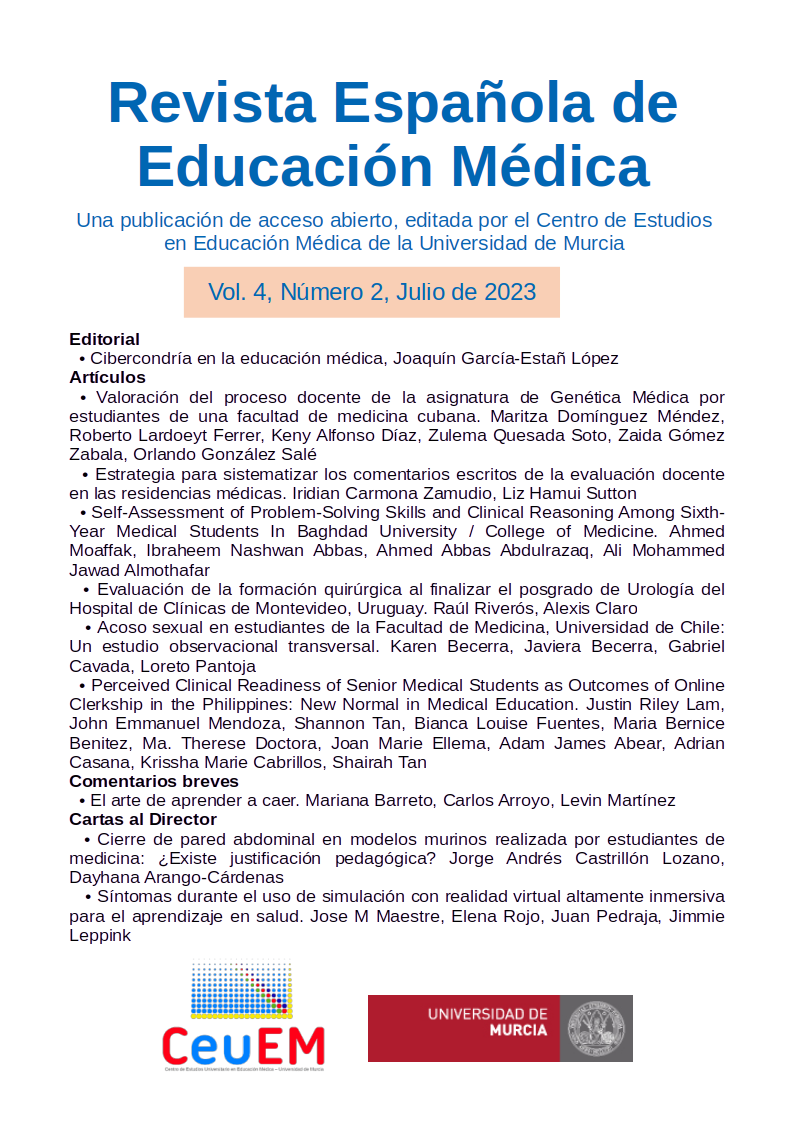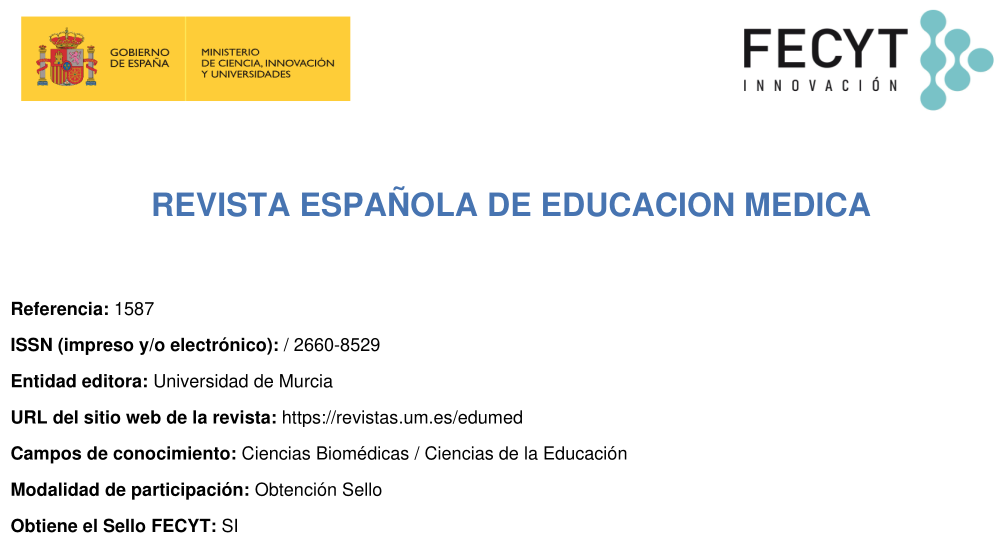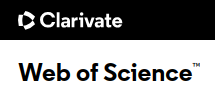Cibercondría en la educación médica
Resumen
La cibercondría es un término utilizado para describir la preocupación excesiva y la ansiedad que una persona experimenta debido a la información médica que encuentra en línea. Este término se refiere a la tendencia de algunas personas a buscar información sobre sus síntomas o preocupaciones de salud en internet y luego interpretar erróneamente esa información para llegar a la conclusión de que padecen una enfermedad grave o peligrosa, incluso cuando eso no es necesariamente cierto. Los cibercondríacos pueden pasar horas navegando por sitios web médicos, foros de discusión y otros recursos en línea, en busca de información sobre síntomas o enfermedades que creen tener. Esta búsqueda constante de información puede generar un aumento en la ansiedad y el miedo sobre la propia salud, lo que a su vez puede llevar a conductas evitativas, como evitar salir de casa o buscar constantemente atención médica. Es importante tener en cuenta que, si bien la información médica en línea puede ser útil, también puede ser incorrecta, incompleta o estar basada en suposiciones y especulaciones. Además, el exceso de información médica (infodemia) puede generar ansiedad y estrés innecesarios y puede dificultar la toma de decisiones informadas sobre la salud.
Descargas
Métricas
-
Resumen1224
-
pdf708
-
pdf 708
Citas
McElroy E, Shevlin M. The development and initial validation of the cyberchondria severity scale (CSS). J Anxiety Disord. 2014;28(2):259-265. doi:10.1016/j.janxdis.2013.12.007
Devi GS, Prasanth D, Kumar KP. Cyberchondria: An emerging form of health anxiety. Archives of Mental Health 2021; 22(2(:148.152. http://doi.org/10.4103/amh.amh_49_21
Waterman, Lauren Z, and John A Weinman. 2014. “Medical Student Syndrome: Fact or Fiction? A Cross-Sectional Study.” JRSM Open 5 (2): 204253331351248
Hardy, M. S., & Calhoun, L. G. (1997). Psychological distress and the “Medical Student Syndrome” in abnormal psychology students. Teaching of Psychology , 24(3), 192–193. doi:10.1207/s15328023top2403_10
Walton, G. L. (1908). Why worry? J B Lippincott Company., doi:10.1037/13647-000
Hunter, R. C. A., Lohrenz, J. G., & Schwartzman, A. E. (1964). Nosophobia and hypochondriasis in medical students. The Journal of Nervous and Mental Disease , 139(2), 147–152. doi:10.1097/00005053-196408000-00008
Collier, R. (2008). Imagined illnesses can cause real problems for medical students. Canadian Medical Association Journal , 178(7), 820–820. doi:10.1503/cmaj.080316
Yang Y, Ta N, Li Z. Investigating the Obsessive and Compulsive Features of Cyberchondria: A Holistic Review. Front Psychol. 2022;13:897426. Published 2022 Jul 4. doi:10.3389/fpsyg.2022.897426
Khazaal Y, Chatton A, Rochat L, et al. Compulsive Health-Related Internet Use and Cyberchondria. Eur Addict Res. 2021;27(1):58-66. doi:10.1159/000510922
Arsenakis S, Chatton A, Penzenstadler L, et al. Unveiling the relationships between cyberchondria and psychopathological symptoms. J Psychiatr Res. 2021;143:254-261. http://doi.org/10.1016/j.jpsychires.2021.09.014
McMullan, R.D., Berle, D., Arnáez, S. and Starcevic, V. The relationships between health anxiety, online health information seeking, and cyberchondria: systematic review and metaanalysis. Journal of Affective Disorders, 2019; 245: 270-278, doi: 10.1016/j.jad.2018.11.037.
Zheng, H., Sin, S.-C.J., Kim, H.K. and Theng, Y.-L. (2021), "Cyberchondria: a systematic review", Internet Research, Vol. 31 No. 2, pp. 677-698. https://doi.org/10.1108/INTR-03-2020-0148, https://www.emerald.com/insight/content/doi/10.1108/INTR-03-2020-0148/full/html
Arnáez, S., García-Soriano, G., Castro, J. et al. The Spanish version of the short form of the Cyberchondria Severity Scale (CSS-12): Testing the factor structure and measurement invariance across genders. Curr Psychol (2022). https://doi.org/10.1007/s12144-022-03170-3
McElroy E, etal. The CSS-12: Development and Validation of a Short-Form Version of the Cyberchondria Severity Scale. Cyberpsychology, Behavior, and Social Networking 2019 22:5, 330-335.
Mestre-Bach G, Potenza MN. Cyberchondria: a Growing Concern During the COVID-19 Pandemic and a Possible Addictive Disorder?. Curr Addict Rep. 2023;10(1):77-96. doi:10.1007/s40429-022-00462-3
Aulia A, Marchira CR, Supriyanto I, Pratiti B. Cyberchondria in First Year Medical Students of Yogyakarta. Journal of Consumer Health on the Internet, 24:1, 1-9. http://doi.org/10.1080/15398285.2019.1710096
Batigun A, Gor N, Komurcu B, Erturk IP. Cyberchondria Scale (CS): Development, Validity and Reliability Study. Dusunen Adam The Journal of Psychiatry and Neurological Sciences 2018; 31(2): 148-162 DOI: 10.5350/DAJPN2018310203
Farooq A, Laato S, Islam AKMN. Impact of Online Information on Self-Isolation Intention During the COVID-19 Pandemic: Cross-Sectional Study. J Med Internet Res 2020;22(5):e19128. Doi: 10.2196/19128
Laato S, Najmul AKM, Islam M & Whelan E. What drives unverified information sharing and cyberchondria during the COVID-19 pandemic?, European Journal of Information Systems, 2020; 29:3, 288-305, DOI: 10.1080/0960085X.2020.1770632.
Inmens. Cibercondria. Julio 2020. https://www.inmens.es/articulo/cibercondria-adolescentes (visitada el 4/5/23).
Patanapu SK, Sreeja CS, Veeraboina N, Reddy KV, Voruganti S, Anusha P. Prevalence and effect of cyberchondria on academic performance among undergraduate dental students: An institutional based study. Ind Psychiatry J. 2022 Jul-Dec;31(2):228-234. http://doi.org/10.4103/ipj.ipj_272_21
Kanganolli SR, Kumar P. A cross-sectional study on prevalence of cyberchondria and factors influencing it among undergraduate students. International Journal of Medical Science and Public Health Online 2020; 9(4); 263-266. http://doi.org/10.5455/ijmsph.2020.01010202020022020
Bati AH, Mandiracioglu A, Govsa F, Çam O. Health anxiety and cyberchondria among Ege University health science students. Nurse Educ Today. 2018;71:169-173. doi:10.1016/j.nedt.2018.09.029
Capdevila-Gaudens P, García-Abajo JM, Flores-Funes D, García-Barbero M, García-Estañ J (2021) Depression, anxiety, burnout and empathy among Spanish medical students. PLoS ONE 16(12): e0260359. https://doi.org/10.1371/journal.pone.0260359
Derechos de autor 2023 Servicio de Publicaciones de la Universidad de Murcia

Esta obra está bajo una licencia internacional Creative Commons Atribución-NoComercial-SinDerivadas 4.0.
Las obras que se publican en esta revista están sujetas a los siguientes términos:
1. El Servicio de Publicaciones de la Universidad de Murcia (la editorial) conserva los derechos patrimoniales (copyright) de las obras publicadas y favorece y permite la reutilización de las mismas bajo la licencia de uso indicada en el punto 2.
© Servicio de Publicaciones, Universidad de Murcia
2. Las obras se publican bajo una licencia Creative Commons Reconocimiento-NoComercial-SinObraDerivada 4.0.
![]()
3. Condiciones de auto-archivo. Se permite y se anima a los autores a difundir electrónicamente las versiones preprint (versión antes de ser evaluada y enviada a la revista) y/o post-print (versión evaluada y aceptada para su publicación) de sus obras antes de su publicación, ya que favorece su circulación y difusión más temprana y con ello un posible aumento en su citación y alcance entre la comunidad académica.




















